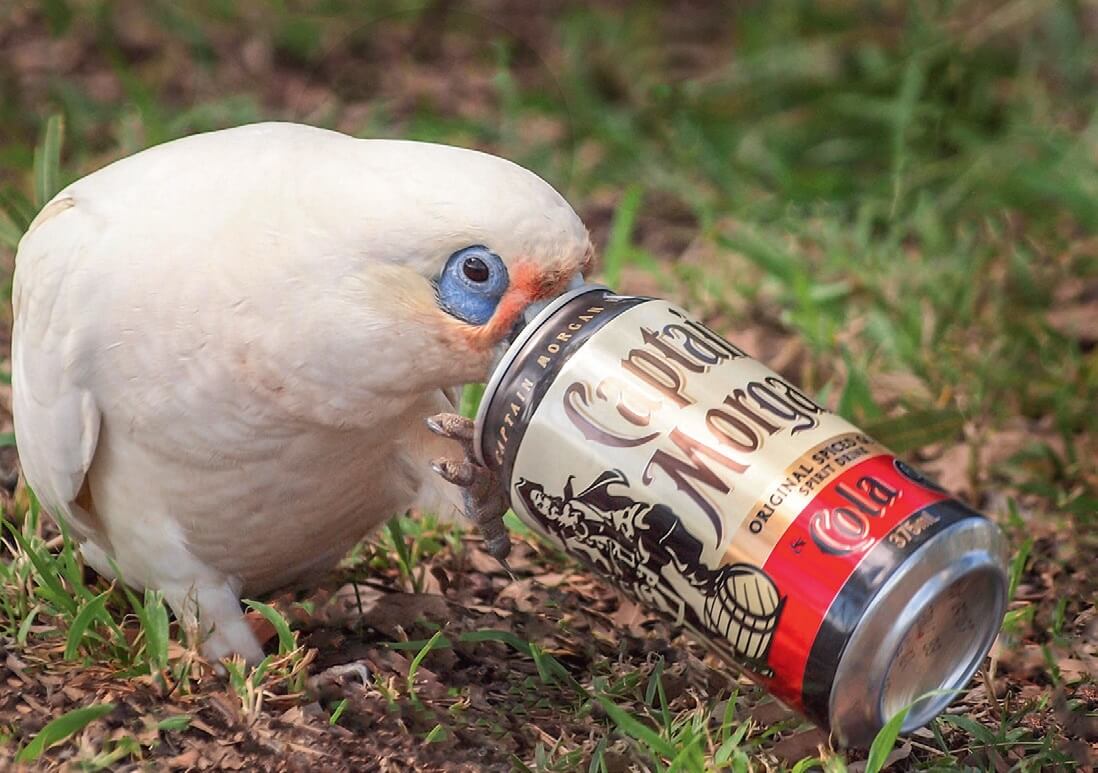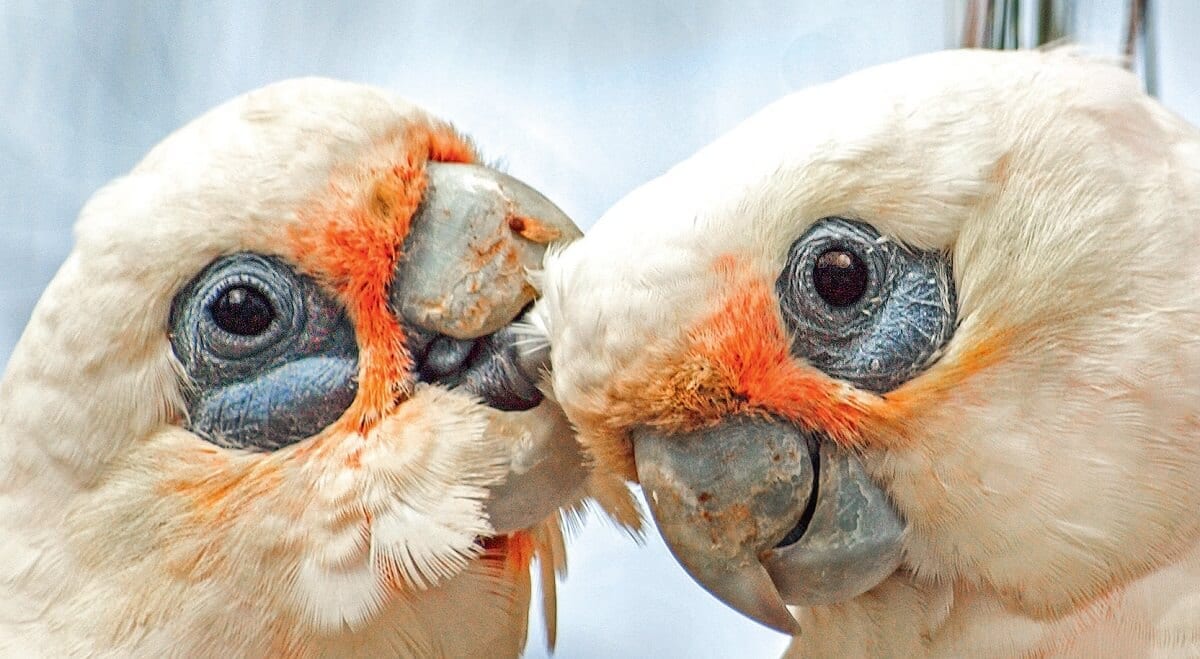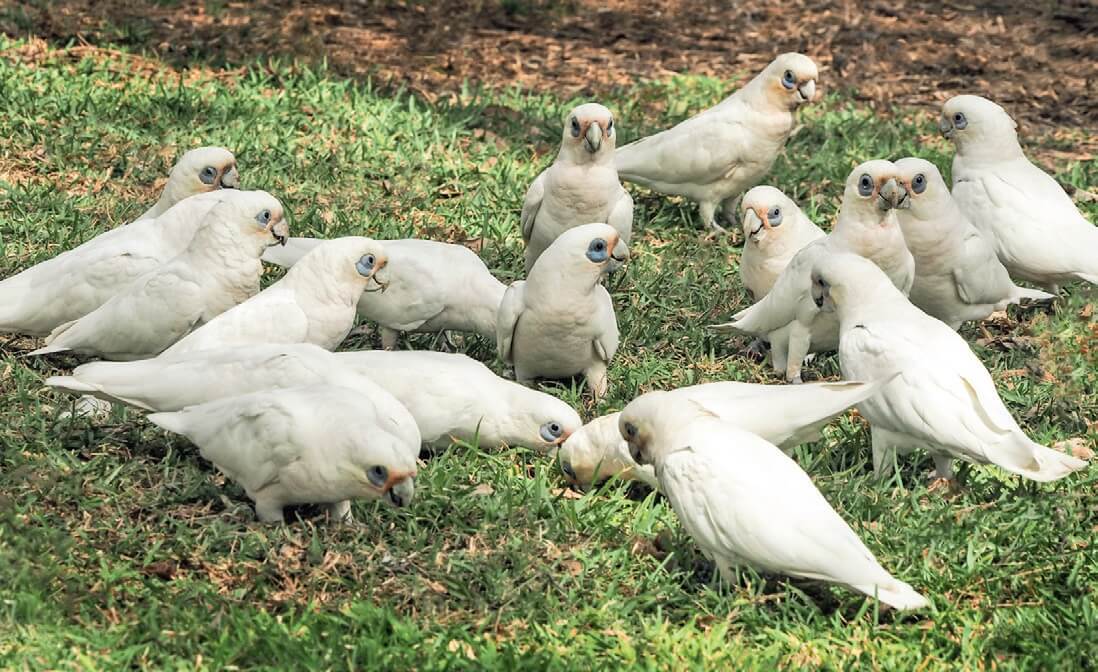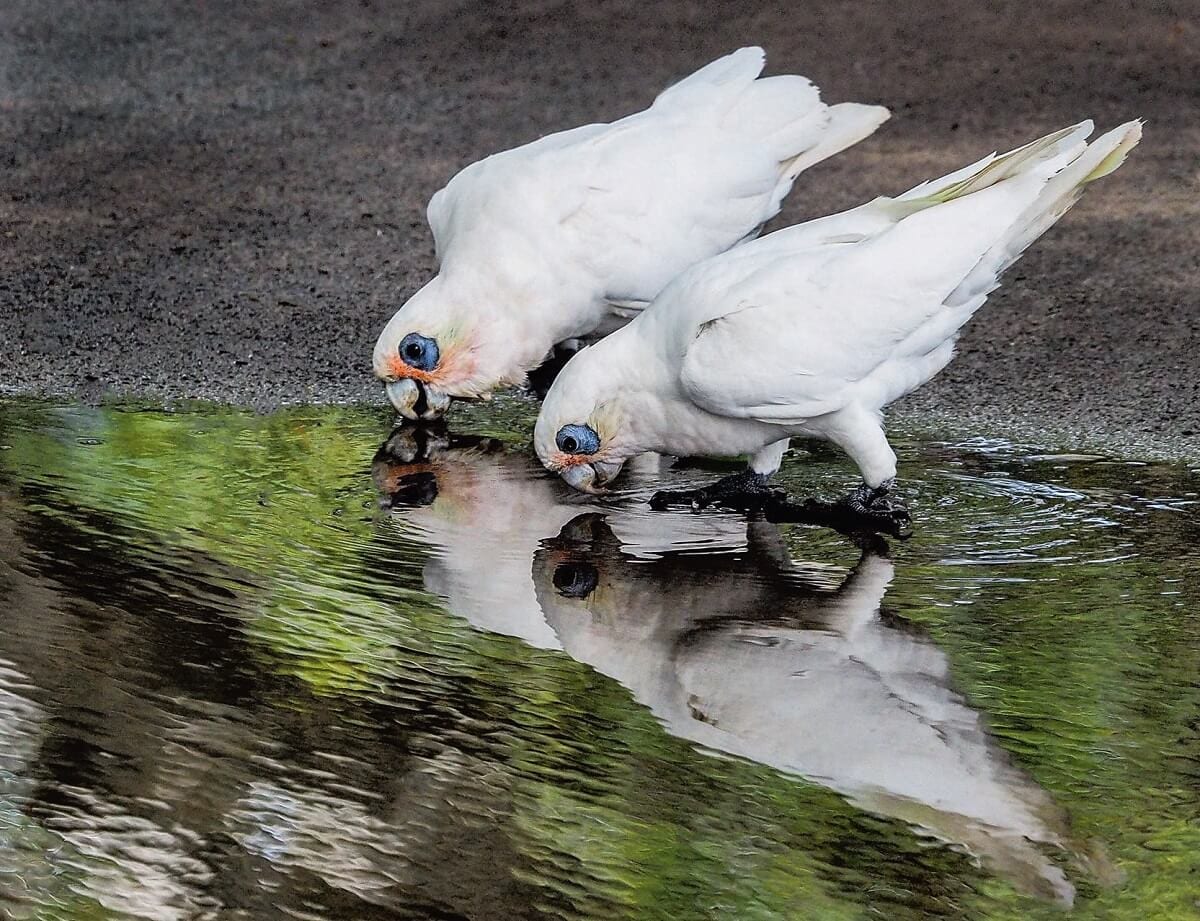Tags: Wildlife. Corella. Birds. Nature. Native. Parrots. Bribie Island. Brisbane. Queensland. Australian.
Every resident on Bribie Island I am sure would be familiar with the Little Corella which populates the Island in large noisy flocks. They are mainly to be found in residential neighbourhoods and at Bongaree around the jetty area is a favourite haunt. Little Corellas are largish, white Cockatoos about 36-39 cm in length and weighing 300-400 g. They have small crests, blue skin around their eyes and pink to red feathers around their bills. Their scientific name Cacatua sanguine which means blood-stained cockatoo.
Featured Image(above): Alcoholic Corella
This refers to these markings. Both male and female are similar in plumage and size. It’s not so long ago that there were no Little Corellas in coastal areas as they were confined to arid outback areas where the conditions were mainly boom and bust. In good seasons the Little Corellas thrived but drought spelled disaster for their population. Gradually during these dry periods, the Corellas began moving towards the coast.
During the Millennium drought of 1996 to mid-2010, there was a sizable migration towards the cities where our living conditions suit them very well and where there is an abundance of food and water. Now they are widespread throughout Australia. Increased agriculture also played a part in their movement towards the coast in the late nineties. Their main foods are grass seeds, grains and occasionally fruit.
I have watched Corellas at Bongaree attacking a patch of grass, pulling out the plants and eating small bulbs from the root system. One of their habits is to strip leaves from trees, sometimes defoliating an entire tree in a few days. This habit makes them unpopular with gardeners and horticulturists, while their tendency to destroy whole grain crops exasperates the farmers. So Little Corellas are unpopular with a fairly large range of people. This is a pity as they are so entertaining and are sometimes referred to as “The Court Jesters of the Bird World”.
I sometimes sit and watch them while they are frolicking on the ground or in trees performing the most extraordinary feats. I have seen them slippery-sliding down steep corrugated iron roofs and going back and repeating the act over and over. They sometimes hang upside down and swing from a tree branch and on the ground when they are feeding, they get up to all sorts of tricks and look as if they are really enjoying themselves. Of course, there are lots of squabbles as well which adds to the entertainment.
I don’t know if they breed on Bribie Island as I am yet to see them nesting. Little Corellas are thought to be monogamous. They make their nests in large almost vertical hollows in trees near water, in high river banks and sometimes in termite nests. Their nests are often used for many years. Clutches of 2-4 white eggs are laid on the wood chip lining of the nest and are incubated by both parents for about 24 days. Chicks are born completely naked and helpless. After a while, they develop a yellowish down before growing feathers. They fledge at about 6-8 weeks.
Corellas nest in large colonies so require many suitable hollows. This can lead to displacing other species that also require hollows which are fast dwindling with continued development. Other common names for Little Corellas are “Little Cockatoo” and “Blue-eyed Cockatoo”. “Birdirra” was the name given to them by an aboriginal tribe in Western Australia. They were kept as pets, cooked for food and the feathers were used in ceremonies.
There are two other species of Corella in Australia. Both are larger but we are unlikely to see them in the wild on Bribie Island unless there is a cage escapee. They are easy to tame and are sometimes kept as pets and can live up to 50-60 years in captivity. Their range is widening with more land clearing and more water outlets being made available. To date, Corellas have overcome most threats and are thriving with the help of the human species.



